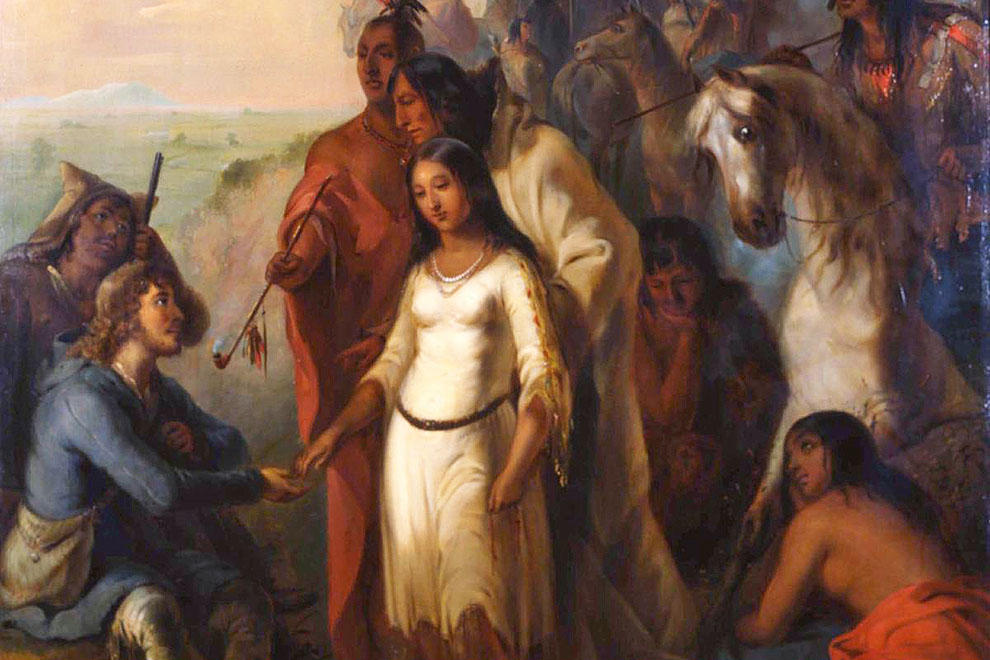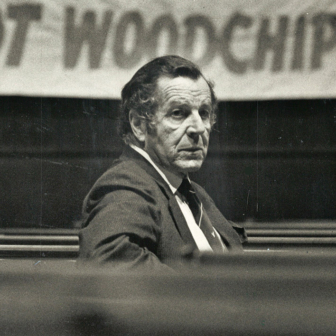By the 1960s, when I was growing up there, Queensland had become skilled at burying the Aboriginal past, and Queenslanders spoke about its traces in hushed tones. As a child, I wondered why. I recall a particular day when my grandfather Joe whispered that some of his neighbours had a “touch of the tarbrush.” “What does that mean?” I had no clue. He told me that it meant Aboriginal ancestry. I was flummoxed by these comments, which seemed out of character. A tram driver for most of his working life, Joe had refused promotion because the new job would have involved punishing people who could not afford to pay. A son of the Great Depression, he respected hardworking men and women. I had never before heard him say anything that sounded discriminatory or racist.
Only after years of archival research into Australian history did I realise why it was necessary to speak about such topics in a whisper. Unions between Aboriginal women and white men were against the law. You did not want the police to hear. You did not want your neighbours to suffer the shame and the punishment of fines or incarceration. Where Joe grew up in north Queensland, white men went to jail for cohabiting with Aboriginal women. Worse, with marriage prohibited and Aboriginal marriage law not recognised, their children were classed as “illegitimate.” Aboriginal wives and children were taken away.
Keeping these “secrets of nation” as family secrets became common sense, and hence a deeply ingrained practice. Not only had Aboriginal people supposedly just “gone” from the urban and rural landscape with no heroic battles, but according to what we were taught in primary school, it was as if they had never even shared the same spaces. Let alone fallen in love, married, and loved their children.
When I became a historian, I started to investigate the history of race and colonialism, and eventually came to the topic of intermarriage across colonising boundaries. The history of love, above and beyond other themes, seemed to promise gendered clues that might help people understand what lay beneath the surface of history, clues to buried, intimate secrets – the private stuff that makes our nations tick.
As a child I had been curious about the Aboriginal place names proclaiming themselves as we drove to the Sunshine Coast – Tibrogargan, Beerburrum, Ngungun, Mooloolaba – but I wondered where all the people had gone. I hoped that they might still be living somewhere out there in the bush. I was curious, too, about the family living across the road, that my father said was Aboriginal. But when I asked about them, others told me that they were not “really” Aboriginal. “They are French, or probably Islanders.” That is, they were from somewhere else. Real Aboriginal people had either disappeared or were living far away in remote regions.
The favoured historical tome of the day, Gordon Greenwood’s Australia: A Social and Political History (1955 and with many updated editions), had 445 pages and thirty-seven illustrations, but no room at all for Aboriginal people. The notion that any Aboriginal people lived nearby did not fit the national imagination.
Only much later did I learn that Evelyn Moiar Serico, the old lady who lived across the road, was Gubbi Gubbi. Her country extended north of Pine River to the Sunshine Coast. This matriarch held important knowledge about the land that we knew as our place. The suburbs divided into house lots, with backyards where we kept chickens and played cowboys and Indians. My father was born on this country, too.
The Serico family managed to live on and visit their country, and the matriarch passed on her language and knowledge. My dad and the young Nurdon Serico, Evelyn’s son, had fished and built dams in the local creeks, and had once chased an elephant that escaped from a circus. When I was a child, Nurdon taught me to sprint in the local park. Many years later, I found out that Nurdon and his sister Eve had been champion athletes, and that Eve had been selected for the Olympic Games. Their father was a champion boxer and war veteran. Both parents worked hard at multiple jobs. Theirs was a rare escape from Queensland’s tight Aboriginal reserves system, which endeavoured to segregate Aboriginal people from everyone else.
From 1897, Queensland’s segregation policy aimed to provide a lasting solution to prevent coloniser–Indigenous fraternisation, especially intermarriage. Forced emigration curbed Aboriginal people’s ongoing assertions of sovereignty in their own custodial country.
Queensland’s hyper-vigilance was sparked in part by its cosmopolitan makeup. Pacific Islanders, Aboriginal and Torres Strait Islander people, Chinese, Japanese, Javanese, Malaysians, Indians and many more nationalities lived alongside each other, especially in the north. Queensland’s policy-makers wanted to prove that its polyglot days were over and that it could fit into a homogeneous White Australia.
In 1901, the same year that the federated nation came into being, the Queensland government tightened up restrictions on intermarriage between Aboriginal people and everyone else. Amendments to the Aboriginals Protection and Restriction of the Sale of Opium Act 1897 curtailed Aboriginal people’s freedom of movement and created geographical boundaries to prevent them from intermixing with whites and Asians.
Interracial couples found it extremely difficult to obtain permission to legally marry under state law and were not allowed on reserves. It was easy for police to arrest and jail the non-Aboriginal husband. This rendered families at risk of rupture and permanent separation. When the legislation first came in, white frontiersmen took their objections to parliament and, via sex scandals, successfully discredited the two inaugural Aboriginal Protectors, Walter Roth and Archibald Meston. But that was not enough.
State law classed the children from mixed unions as illegitimate. After all, they were considered the product of illicit unions. Marriages according to Indigenous law were not recognised. The children were born out of “illicit love.”
Many of the children in these families ended up suffering terribly in institutions and on reserves. The shocking legacies of removal policies continue today. Although addressed in part by the Bringing Them Home report (1997) and later by prime minister Kevin Rudd’s 2008 apology to the Stolen Generations, the history that made the parents’ unions “illicit” has not been well understood.
Eve Mumewa Fesl (nee Serico) told me the tragic story of what happened to her and Nurdon’s grandfather, a Danish carpenter who had married their Gubbi Gubbi grandmother, Lucy Crowe. One fateful day, he returned from work to find his wife and children gone. Police had forcibly removed them to Barambah reserve (later Cherbourg). The family was torn apart, and their grandfather became a broken man. He never recovered from the trauma of this sudden loss of his entire family, and he died in an asylum.
In my book Illicit Love, I set out to discover how Australia’s buried secrets compared with stories from the earlier frontiers of the United States. The stories and scenarios that I unearthed while juxtaposing boundary-crossing marriages across nations were entirely different, but they had “illicit love” in common.
In the early twentieth century, Australian policy-makers noted the “success” of forced emigration of Native Americans to the Indian Territories – in what we now know as the Trail of Tears. Treaties, however, gave Native Americans greater autonomy than Australia’s Indigenous people, and a certain income in compensation for their lost lands.
Australia’s intermarriage restrictions were more obscure than America’s; but in both nations, laws that restricted intermarriage worked in tandem with the reserves policy to dismantle what I term the “marital middle ground” – the shared spaces that opened the possibility of intimate negotiations across two sets of marriage laws, each underpinning authority over the land. This middle ground held the potential to bring people together into shared family bonds that would stretch into future generations. But in order to give pre-eminence to coloniser sovereignty, marriages across the boundaries of colonialism became secrets of state, best omitted from the histories of nation, mentioned only in whispers. Yet, to this day, their descendants continue to assert their families’ sovereign rights. •




